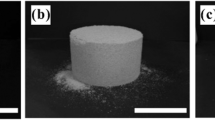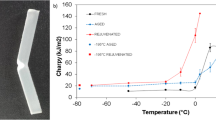Abstract
IT has already been shown that the slow extension of wool fibres under constant stress in water at ordinary temperatures has the characteristics of a first-order reaction; when log (E − Et) is plotted against t, where Et is the extension at time t, a linear relationship is obtained1. As the slowly extended fibres return to their original length on being released in water, even from extensions so great as 70 per cent, molecular slip is excluded, and it seemed probable that a similar, but more precise, relationship would be obtained by extending fibres under constant load. This deduction has been confirmed with Lincoln wool fibres in water at 22.2° C. under a load of 7 × 105 gm. per sq. cm. of the original cross-sectional area.
This is a preview of subscription content, access via your institution
Access options
Subscribe to this journal
Receive 51 print issues and online access
$199.00 per year
only $3.90 per issue
Buy this article
- Purchase on Springer Link
- Instant access to full article PDF
Prices may be subject to local taxes which are calculated during checkout
Similar content being viewed by others
References
Speakman, Nature, 159, 338 (1947).
Author information
Authors and Affiliations
Rights and permissions
About this article
Cite this article
RIPA, O., SPEAKMAN, J. Plasticity of Wool. Nature 166, 570–571 (1950). https://doi.org/10.1038/166570b0
Issue Date:
DOI: https://doi.org/10.1038/166570b0
This article is cited by
-
The viscoelasticity and structure of keratin and collagen
Kolloid-Zeitschrift & Zeitschrift für Polymere (1965)
Comments
By submitting a comment you agree to abide by our Terms and Community Guidelines. If you find something abusive or that does not comply with our terms or guidelines please flag it as inappropriate.



